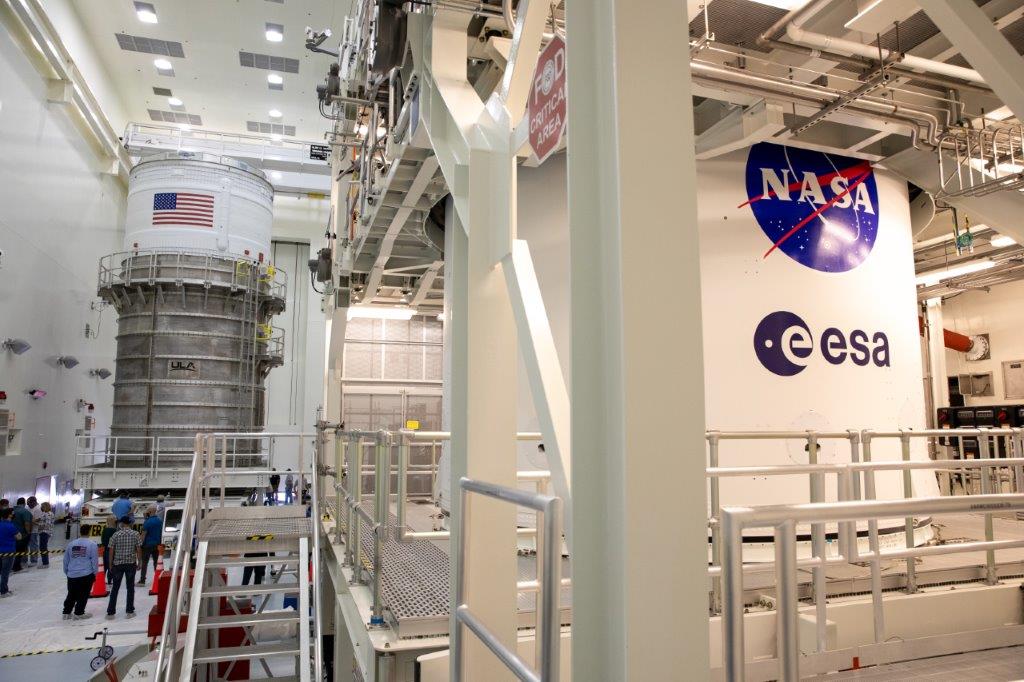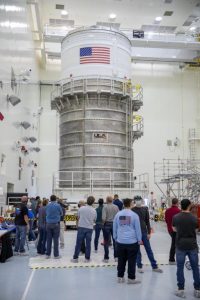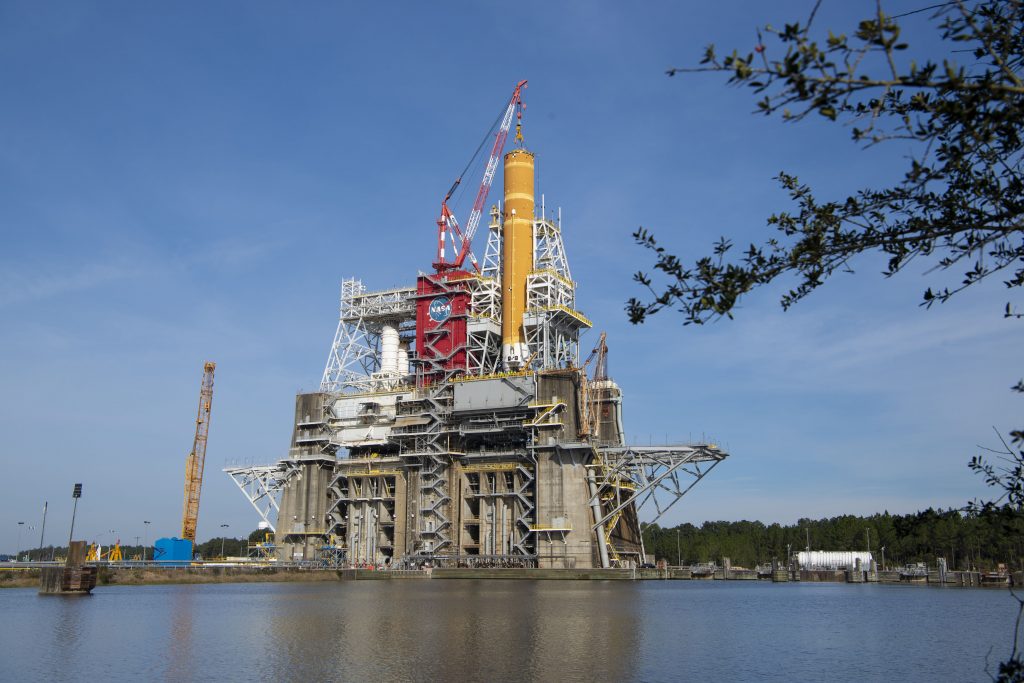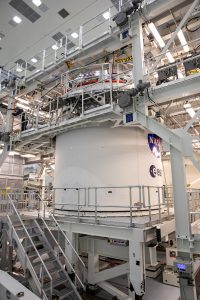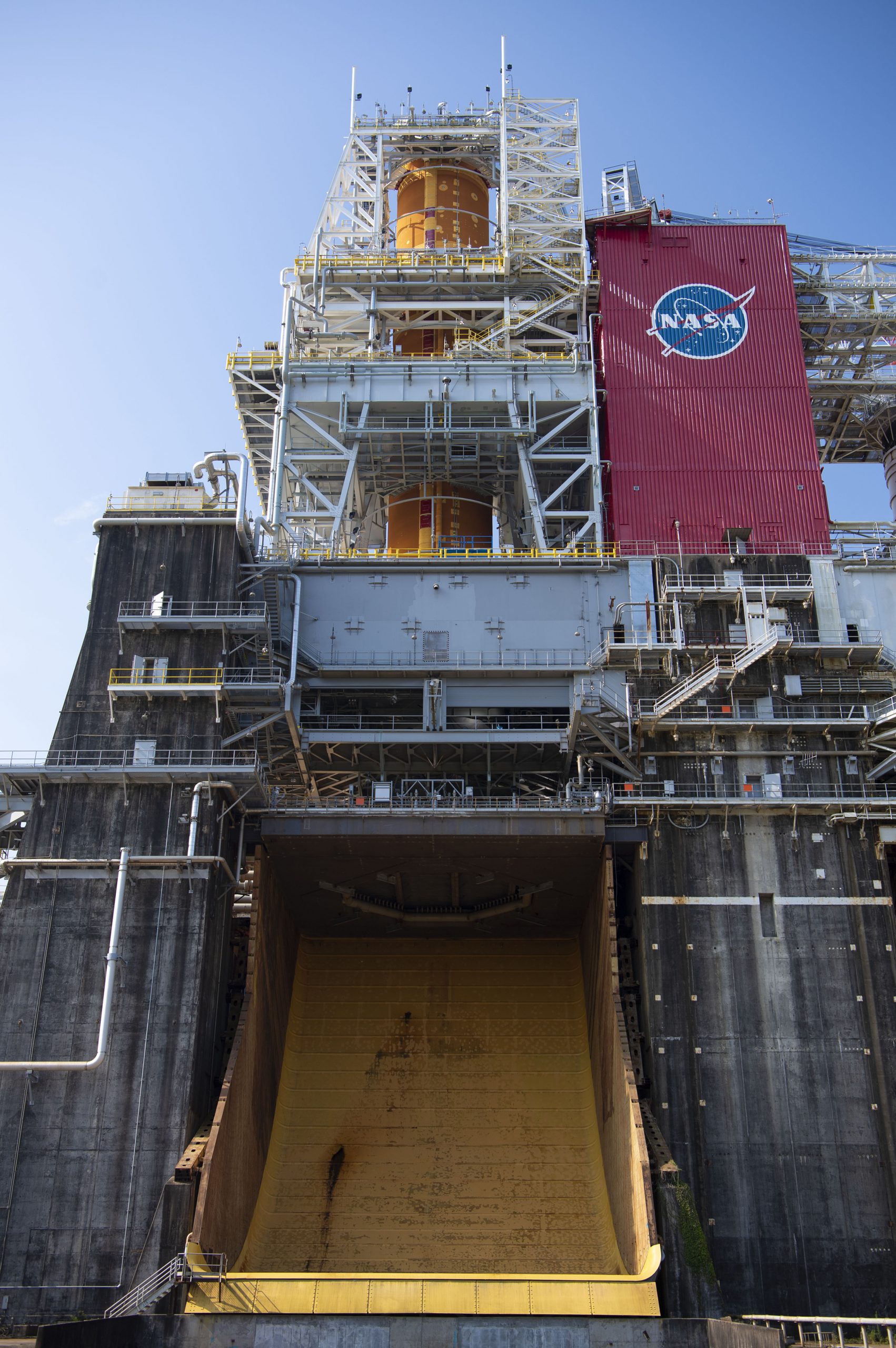During NASA’s Green Run hot fire test, the team will be especially interested in several key operations when testing the Space Launch System (SLS) rocket core stage under conditions it may experience during a variety of deep space missions.
Green Run, an end-to-end system test of the core stage with Artemis I flight hardware, will help validate the core stage design. One of the main questions Green Run will answer is: How does the integrated core stage perform during a series of dynamic operations it may experience during launch and ascent to deep space? The test is not only for environments and operations that the rocket’s core stage will encounter on Artemis I, but also for those it will undergo during future missions.
This video explains more about the operations occurring during the Green Run hot fire.
Hot fire day begins with filling the liquid oxygen and liquid hydrogen tanks with more than 700,000 gallons of propellant. After the supercold propellant is loaded and the core stage systems are conditioned to cryogenic temperatures as low as minus 423 degtrees Fahrenheit, the test conductor will poll the team. When everything is ready, they will proceed with the terminal countdown that includes the final 10 minutes before the hot fire. During the terminal countdown, the team will initiate the autonomous launch sequence that simulates the countdown for the Artemis I launch. Then, the test transitions from ground control to on-board software control of the core stage so that the test is fully automated starting at T-30 seconds.
The core stage RS-25 engine ignition starts at approximately six seconds before T-0, beginning with Engine 1, followed by Engines 3, 4, and 2, each ignited in sequence a few hundredths of a second apart. Recording data on how the stage performs at T-0 and as the engines ramp up to 109 percent power is one critical test operation. Another is when the engines are throttled down to 95 percent, just as they are throttled down in flight at Max-Q, or maximum dynamic pressure when aerodynamic forces put the greatest stress on the rocket.
The team will also test the margins of the core stage thrust vector control system that gimbals, or moves, each engine in a specific pattern. Each engine has its own thrust vector control system that is essential for moving the engine to control the rocket’s flight. Depending on the trajectory flown, the thrust vector control system can gimbal the engines to direct thrust and thus the rocket’s path. The first gimbaling occurs a little over a minute into the test.
An important part of the hot fire occurs when this system begins rapidly moving the engines in specific patterns that are more extreme than those planned for Artemis missions. This occurs around 2 minutes and 10 seconds into the test. This test is called the frequency response test because it measures the stage’s frequency as the thrust vector control system gimbals the engine. The test ensures the thrust vector control system’s response is demonstrated under a variety of flight-like conditions. This is a very dynamic portion of the core stage hot fire test and understanding the thrust vector control system and the core stage’s response across a range of frequencies is important to understand the stage’s performance during flight.
To ensure SLS can safely send humans to space, NASA will use data from the Green Run test campaign, along with modeling and analysis, to show the core stage design can fly not only on Artemis I, but also for many deep space missions.
For updates on Green Run progress, check back at this blog. NASA TV coverage will begin about 30 minutes before the test. For more information about SLS Green Run, visit https://www.nasa.gov/artemisprogram/greenrun

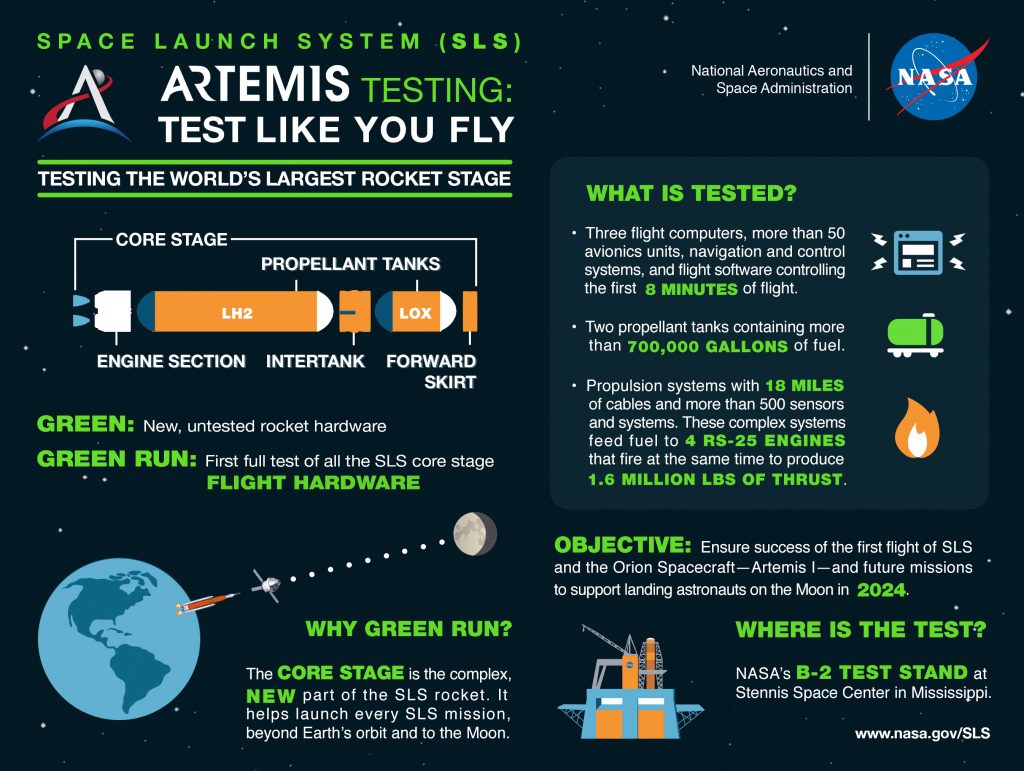
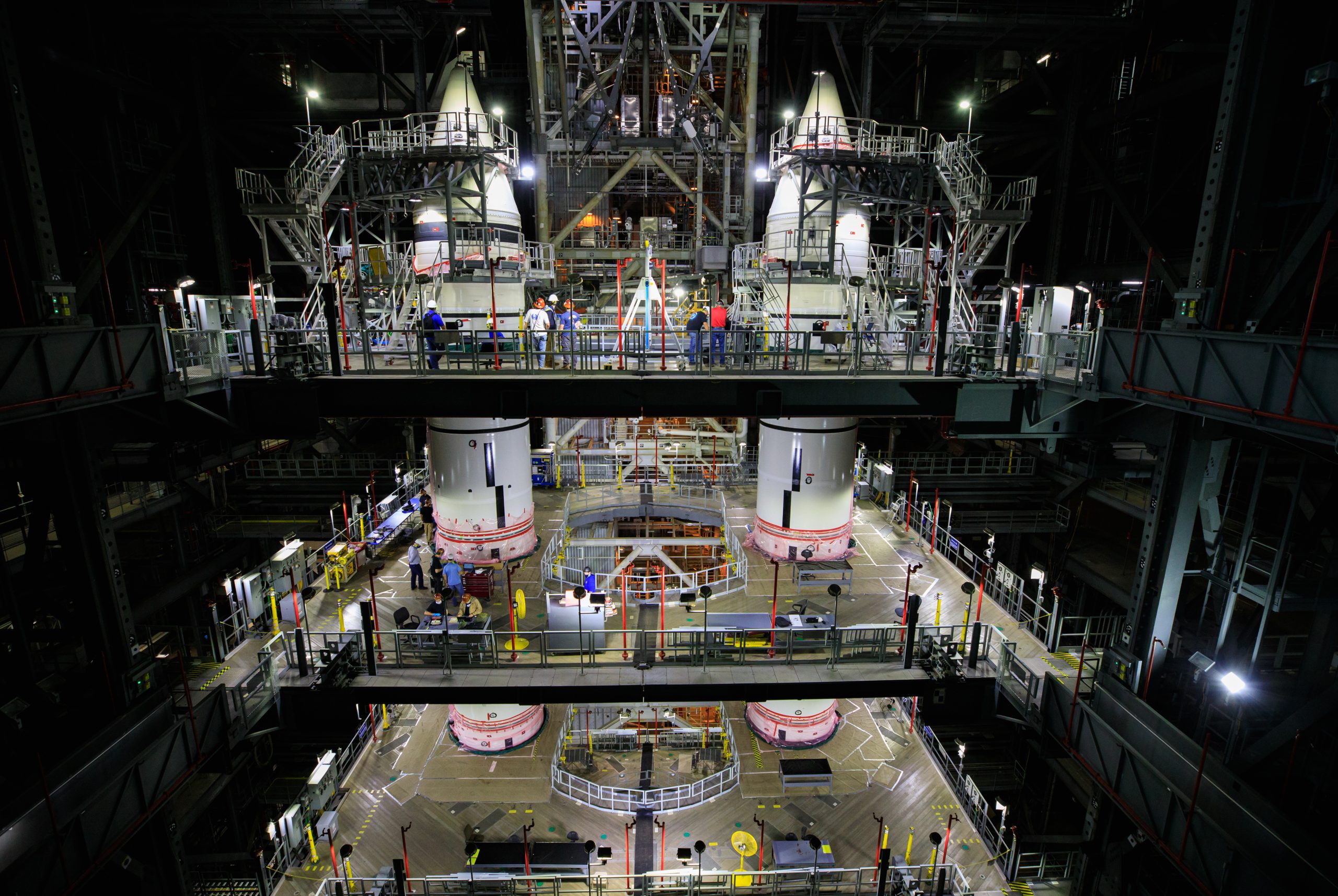
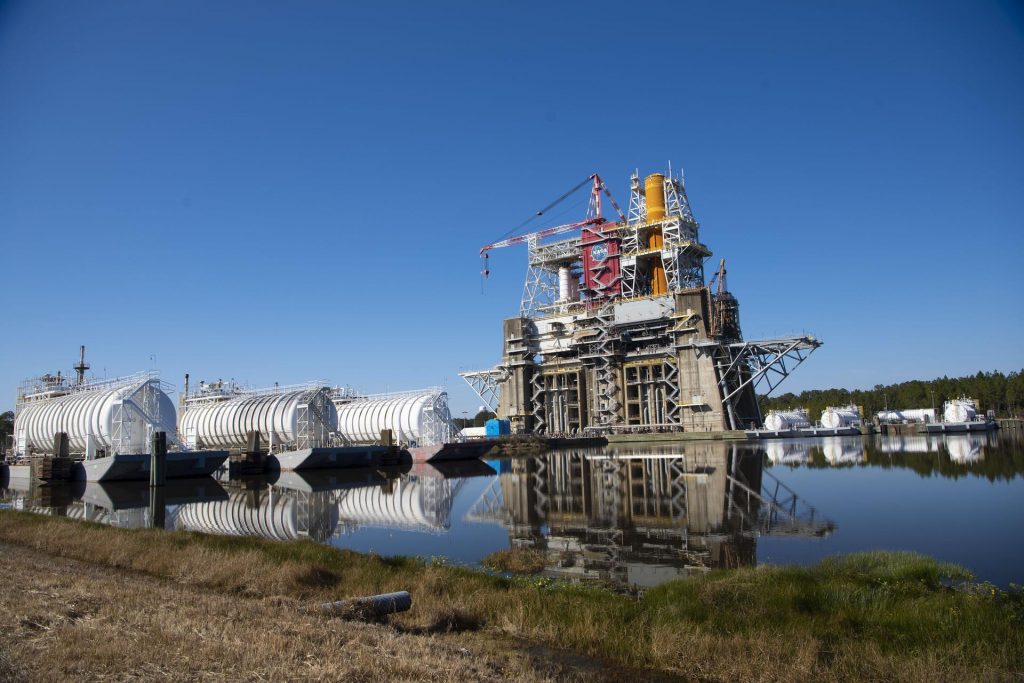 Last week during checkouts for the second hot fire test, data indicated the valve (a type of valve called a pre-valve) was not working properly. The valve is part of the core stage’s main propulsion system and is opened at the beginning of the test and closed if necessary to stop the flow of liquid oxygen from the core stage propellant tank to the respective RS-25 engine during the hot fire.
Last week during checkouts for the second hot fire test, data indicated the valve (a type of valve called a pre-valve) was not working properly. The valve is part of the core stage’s main propulsion system and is opened at the beginning of the test and closed if necessary to stop the flow of liquid oxygen from the core stage propellant tank to the respective RS-25 engine during the hot fire.
